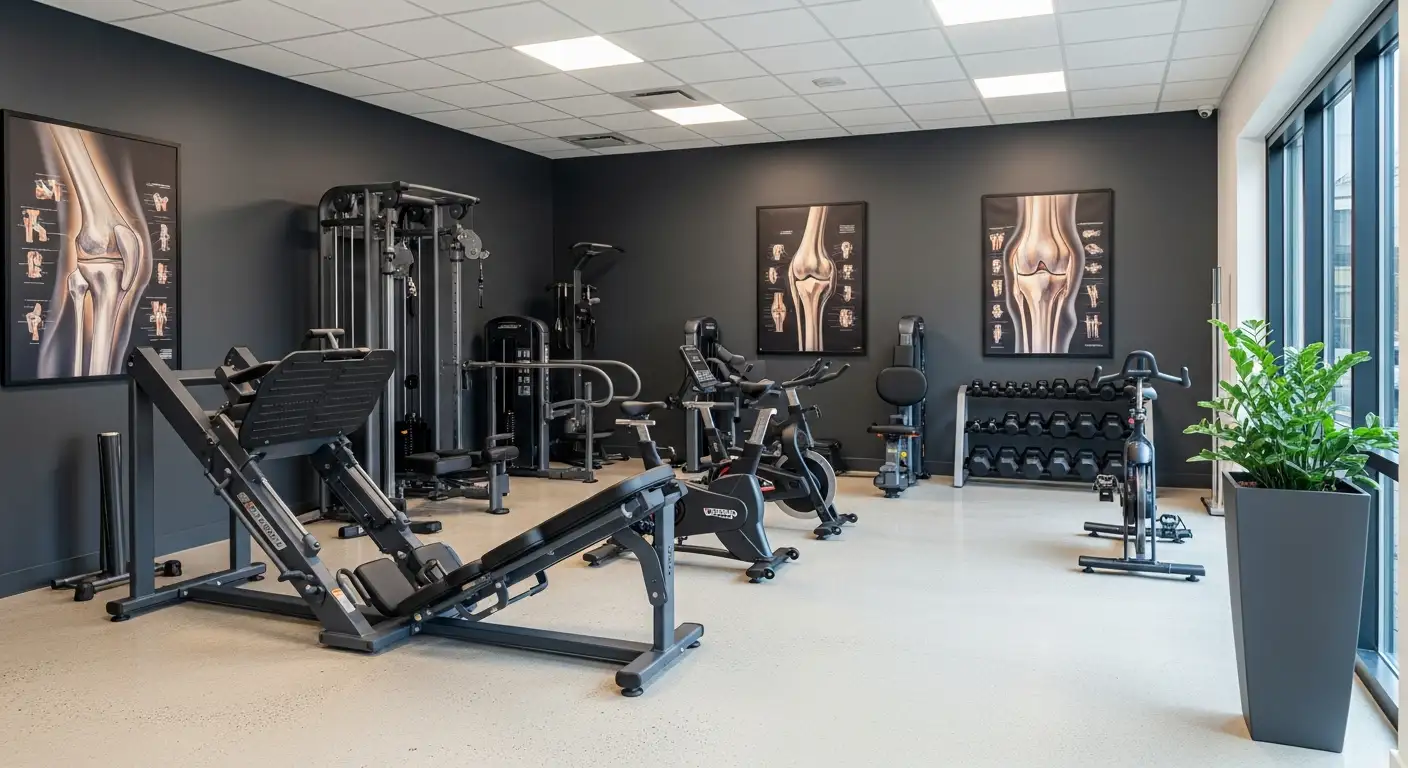Understanding Knee Surgery Pain
The experience of pain following knee surgery is a common concern for many individuals. This section aims to shed light on the various facets of post-surgical pain, distinguishing between acute and chronic pain, and discussing the factors that influence pain perception.
Acute vs Chronic Post-Surgical Pain
Pain following knee surgery can broadly be categorized into acute and chronic types. Acute pain is the initial discomfort that occurs post-surgery and typically lessens every week. There are various ways to manage acute pain, such as taking pain medicine and anti-inflammatory medicines.

On the other hand, chronic post-surgical pain is persistent discomfort that extends beyond the expected healing period. It's reported that around 20% of people experience chronic pain following knee replacement surgery for osteoarthritis (NCBI), and many feel that nothing more can be done for their ongoing pain.
Factors Influencing Pain Perception
Pain perception following knee surgery is highly individualized and can be influenced by several factors. These include pain tolerance, beliefs about personal control over pain, and other medical conditions.
Preoperative and postoperative pain management play a critical role in determining the comfort, duration, and cost of hospitalization, as well as the effectiveness of postoperative rehabilitation. Individual differences in pain tolerance and perception are key considerations in developing a pain management strategy.
Research suggests that higher pain tolerance is associated with a lower dose of morphine required after surgery. Furthermore, the more the patient believes in personal control over pain, the stronger the negative relationship between pain tolerance and morphine requirement.
Understanding the nature of post-surgical pain, its categories, and the factors that influence pain perception can better equip individuals for their knee surgery journey. It provides a foundation for more informed discussions with healthcare providers about pain expectations and management strategies.
Role of Anesthesiology in Knee Surgery
Anesthesiology plays a pivotal role when it comes to knee surgery, including preventing patients from feeling pain during the operation and providing postoperative pain relief, which is essential for effective participation in physical therapy and rehabilitation.
During Operation
During the operation, anesthesiologists employ different types of anesthesia to manage pain. The use of regional anesthesia, such as spinal or epidural anesthesia, is recommended over general anesthesia during knee surgery. This method can lower blood pressure, reduce intraoperative hemorrhage, decrease postoperative nausea and vomiting, and improve pain relief and patient satisfaction [3].
The choice of anesthesia type depends on several factors, including the patient's overall health, the specific type of knee surgery, and the patient's personal preferences. It's important for patients to have a detailed discussion with their anesthesiologist before the surgery to understand the benefits and risks associated with different anesthesia options.
Postoperative Pain Management
Postoperative pain management is an integral part of knee surgery. Effective pain control after the operation can significantly enhance the patient's comfort, speed up recovery, and increase the effectiveness of rehabilitation.
Preemptive use of pain control drugs and pain management procedures can be effective in reducing postoperative pain after knee surgery, resulting in decreased consumption of analgesic agents. Preemptive pain management should be initiated prior to surgical incision.
Anesthesiologists specializing in pain management can work with patients before and after knee surgery to create a personalized pain management plan considering individual conditions, personal history, and preferences. Various pain relief options can be discussed, evaluating their effectiveness, potential side effects, risk of addiction, and impact on the recovery process.
Effective postoperative pain management is essential for total hip and knee replacement surgeries, as it determines the comfort, duration, and cost of hospitalization, as well as the effectiveness of postoperative rehabilitation. Individual differences in pain perception and tolerance are key factors to consider in pain management [1].
In summary, anesthesiology is a critical component of knee surgery, contributing significantly to how painful knee surgery is for the patient. It not only ensures pain-free surgery but also plays a key role in managing postoperative pain, thereby facilitating a smoother recovery and rehabilitation process.
Different Types of Knee Surgeries and Pain
Understanding the pain involved in knee surgery begins by examining the different types of procedures. Each operation has its own associated pain levels, recovery periods, and potential complications.
Total Knee Replacement
Total knee replacement is one of the most commonly performed knee procedures, often recommended for clients with extensive knee injury, osteoarthritis, or other types of arthritis. The procedure involves removing bone and cartilage from the shinbone and thighbone, replacing them with metal and plastic implants. On average, the results last between 15 and 20 years, with over 90% of people satisfied with the replacement 15 years after the procedure [4].
However, total knee replacement is typically regarded as the most painful knee surgery. The procedure involves large incisions, extensive cutting, reshaping of the bone, and can lead to significant postoperative pain. The recovery process is also longer and more intense compared to other knee surgeries [4].
Partial Knee Replacement
Partial knee replacement is most often recommended for clients with minimal damage or arthritis in the knee. This procedure requires a smaller incision, results in less bone loss, and has a shorter recovery time compared to total knee replacement. Many patients find that their partial knee replacements are still functioning well 10 years after surgery [4].
The pain experienced during a partial knee replacement is generally less than a total knee replacement as the surgical procedure is less invasive. However, postoperative pain can vary depending on individual factors, including overall health, pain tolerance, and adherence to pain management strategies.
Arthroscopic Knee Surgery
Arthroscopic knee surgery is generally considered the least painful knee surgery in terms of the surgical procedure and recovery. It involves small incisions through which a camera and surgical instruments are inserted to perform the operation. This minimally invasive approach usually results in less pain, a lower risk of complications, and a quicker recovery time compared to open knee surgeries.
In summary, the degree of pain experienced during and after knee surgery can vary greatly depending on the type of procedure performed. It's important to discuss these factors with your healthcare provider when considering knee surgery to gain a clear understanding of what to expect and how to manage potential pain effectively.
Preemptive and Multimodal Pain Management
Addressing the concern of 'how painful is knee surgery', preemptive and multimodal pain management play a crucial role in reducing discomfort and enhancing recovery after knee surgery. The approach includes the use of pain control drugs and procedures before and after the surgery to minimize pain and optimize recovery.
Preoperative Pain Control
Preoperative pain control is a preemptive strategy that involves the use of pain control drugs and procedures before the surgical incision. Research shows that this approach is effective in reducing postoperative pain after knee surgery, resulting in decreased consumption of analgesic agents.
One recommended method includes the preoperative use of opioids and COX-2 inhibitors. Oral administration of opioids before surgery can help manage postoperative pain and reduce opioid use, while preoperative use of COX-2 inhibitors can provide pain relief and reduce the need for opioids and related complications.
Moreover, patient education before the operation can also contribute to pain control. Providing information about the surgical procedure, rehabilitation protocol, expected benefits, postoperative pain level, and pain management methods can ease patient fears, increase patient satisfaction, and shorten hospitalization and rehabilitation period.
Multimodal Pain Management Strategy
A multimodal pain management strategy involves the use of more than two agents or modalities with different mechanisms for postoperative pain control after knee surgery. The combined use of different drugs or procedures can be more effective in improving pain relief and reducing the consumption of each agent.
The use of regional anesthesia, such as spinal or epidural anesthesia, is recommended over general anesthesia during knee surgery. Such methods can lower blood pressure, reduce intraoperative hemorrhage, decrease postoperative nausea and vomiting, and improve pain relief and patient satisfaction.
In essence, preemptive and multimodal pain management strategies are essential in managing knee surgery pain. By utilizing a combination of methods, it's possible to control pain effectively, improve patient satisfaction, and speed up the recovery process.
Uncertainties and Challenges in Pain Management
Managing pain following knee surgery is a complex process filled with uncertainties and challenges. Persistent post-surgical pain and barriers to effective pain management are among the key issues involved.
Persistent Post-Surgical Pain
Persistent post-surgical pain is a significant concern for patients undergoing knee surgery. According to PubMed Central, between 10-34% of total knee replacement (TKR) patients experience adverse pain outcomes between three months and five years following surgery. It's disheartening to note that around 20% of TKR patients have more knee pain and swelling than before surgery.
Instability is reported by 32% of TKR patients, leading to knee pain and activity limitations six months after surgery. Furthermore, component malpositioning in TKR can result in increased knee pain, instability, and polyethylene wear. Polyethylene wear of the arthroplasty articulating surfaces is a common cause of TKR failure, leading to osteolysis and painful synovitis.
Chronic pain after total knee arthroplasty (TKA) can affect all dimensions of health-related quality of life. It has been found to be associated with functional limitations, depression, anxiety, poorer general health, sleep problems, and long-term opioid use, according to NCBI.
Barriers to Effective Pain Management
There are significant barriers to effective pain management after knee surgery. Chronic pain after TKA is often undertreated, and many people lack adequate access to effective pain management. In England, there is considerable variation in access to specialist services for chronic pain and variation in levels of care.
There is a lack of evidence-based recommendations to guide clinical decisions around the optimal management of chronic pain after TKA. Pain management interventions for patients undergoing TKA have largely focused on perioperative pain control, rather than management of chronic pain.
Further research is needed to determine whether it is possible to develop a perioperative risk prediction tool so that patients at high risk of developing chronic pain after TKA can be identified and provided with targeted interventions.
The proportion of osteoarthritis (OA) patients experiencing long-term pain after arthroplasty ranges from about 10% to 34% after total knee replacement (TKR) and from 7% to 23% after total hip replacement (THR). Preoperative pain sensitization may be one of the reasons for persistent pain after technically successful TKR in up to 30% of patients.
The uncertainties and challenges in pain management highlight the need for a comprehensive and personalized approach to care. As research continues to evolve, the goal remains to provide patients with the most effective strategies to manage pain after knee surgery and improve their quality of life.
The Future of Pain Management in Knee Surgery
As we look towards the future of pain management in knee surgery, there are promising developments in the field. These include the potential of Quantitative Sensory Testing (QST) and the implementation of personalized pain management approaches.
Potential of Quantitative Sensory Testing
QST has shown significant promise in measuring sensory changes due to chronic pain and identifying patients with sensory changes indicative of mechanisms of central sensitization. This technique can help identify patients who may require additional pain treatment in order to fully benefit from surgery [5].
In fact, the pain threshold, as measured by QST, correlates with functional scores in patients with osteoarthritis (OA) scheduled for joint replacement surgery. Lower pressure pain thresholds were found in patients with knee OA and hip OA compared to control subjects. Furthermore, there were correlations between the clinical scores and the level of sensitization.
This suggests that QST could be a valuable tool in determining how painful knee surgery might be for different patients, and in tailoring effective pain management strategies for them.
Personalized Pain Management Approach
Personalized pain management is another future direction in the field. The proportion of OA patients experiencing long-term pain after arthroplasty ranges from about 10% to 34% after total knee replacement (TKR) and from 7% to 23% after total hip replacement (THR). Preoperative pain sensitization may be one of the reasons for persistent pain after technically successful TKR in up to 30% of patients [5].
Patients with osteoarthritis-related knee pain often exhibit somatosensory abnormalities, including pressure hyperalgesia and tactile hypoesthesia. Therefore, pain treatment for these patients should be adapted based on different kinds of pain thresholds that correlate with clinical scores. Patients with poor clinical scores are likely to indicate pain sensitization and may require additional pain treatment [5].
In conclusion, the future of pain management in knee surgery lies in the embrace of personalized treatments and the use of technology like QST to better understand each patient's unique pain experience. These developments provide hope for more effective pain management strategies that will improve patient outcomes and overall quality of life after knee surgery.
References
[1]: https://www.ncbi.nlm.nih.gov/pmc/articles/PMC10890574/
[2]: https://www.asahq.org/madeforthismoment/preparing-for-surgery/procedures/knee-surgery/
[3]: https://www.ncbi.nlm.nih.gov/pmc/articles/PMC3526756/
[4]: https://www.gpoa.com/blog/what-are-the-different-types-of-knee-surgery





